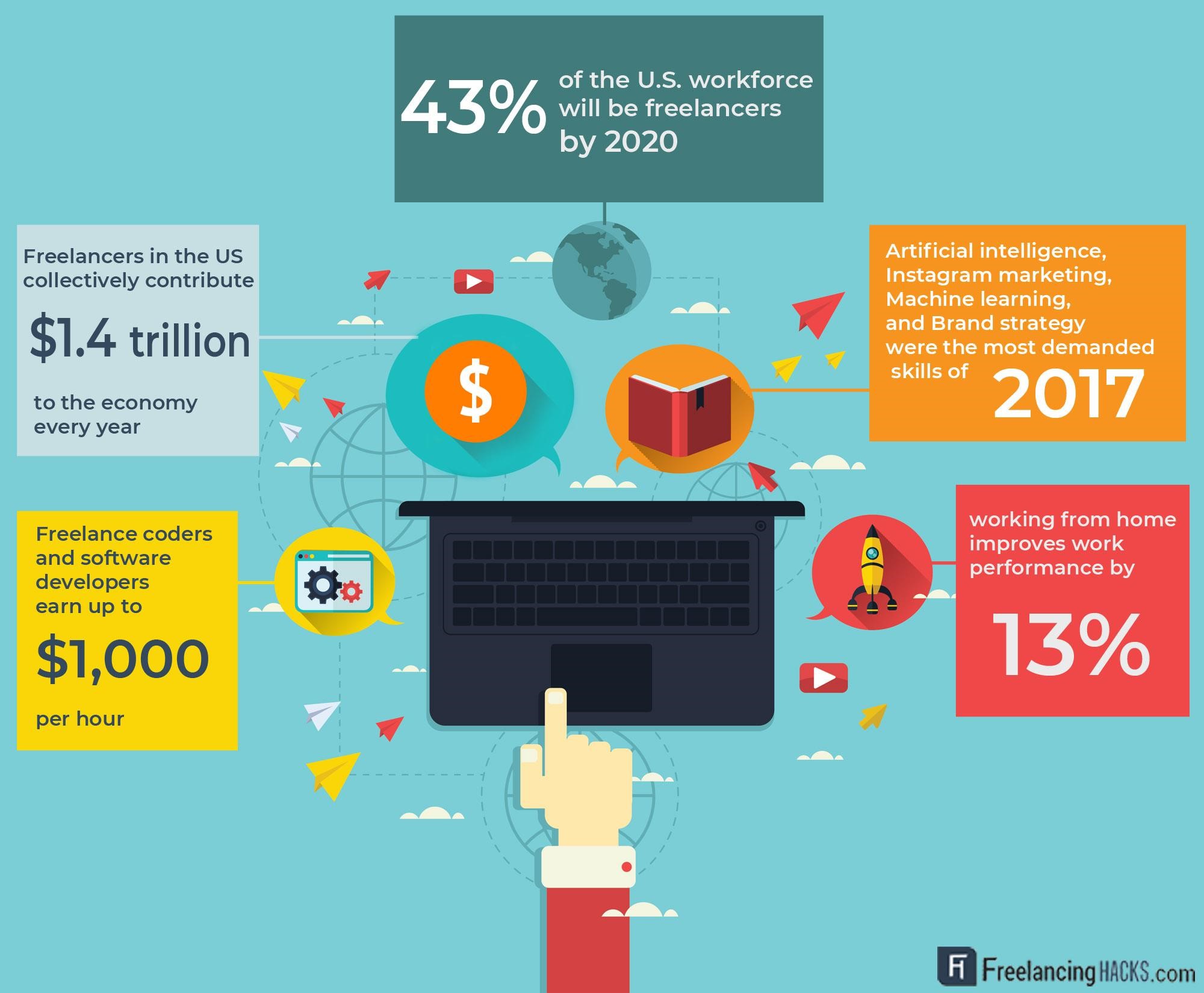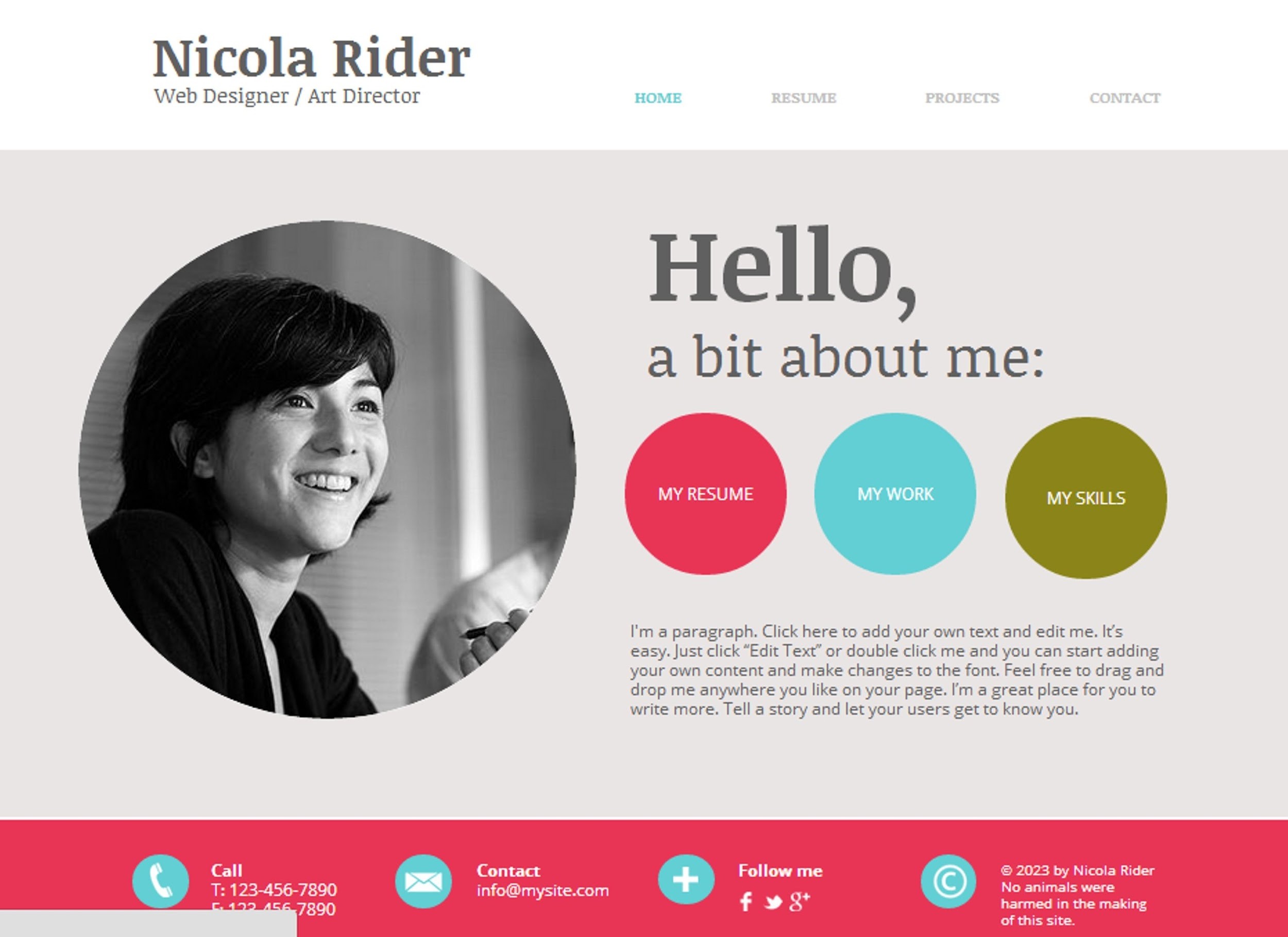

Quick Links
Quick Links

It’s time to get your freelance business off the ground.
More than half of payroll employees in the US nurture a side gig, moonlighting as freelancers in their personal time. It’s a way for them to enhance their skills, meet growing demand not met in traditional ways, and (for many) build a better professional future.
2019 should be a big year for these freelancers, as experts predict that full-time freelancing will jump from 10-30% of the US workforce.
If you feel dissatisfied with your career, you should take stock of your skills and expertise. They may translate easily into a freelance opportunity affording you greater flexibility, experience, and (quite possibly) more money.
Start planning it out.
Treating your freelancing like a business can get you ahead of the competition. More importantly, making a plan to start your freelance career can match you with the best long-term contracts in your field.
The 5 steps in this article lay out a plan to get your freelance business off the ground. Most of these suggestions are offered by the leading freelancers of our day. Also, as a freelance content marketer myself, I can attest to how the world of freelance works.
Following these steps will move you through part-time freelancing into full-time freelancing faster than you thought possible.
Step 1: Choose Your Industry

A Gallup poll taken within the last 5 years found that employers are regularly unable to hire college graduates with the right skills. More and more companies feel that they have to decide between “hiring-to-train” or abandoning major projects.
As a result, companies increasingly meet their needs by hiring self-developing freelancers.
But not all skill sets are created equal in the world of freelancing. In a few key industries, the barrier to entry is surprisingly low. And the demand is incredibly high.
Looking at the compensation numbers for freelance work in greatest demand will demonstrate how desperate companies are to work with experienced freelancers:
- Programming and software development: $150 to over $1,000 per hour
- Website development: $5,000 per month
- Content marketing and writing: $5,000 per month
- Graphic design: $85 per hour
- Copywriting: $250 per hour
- Video editors: $70,000 to over $100,000 per year
- Social media managers: $40,000 to over $70,000 per year
Money isn’t everything. But if you find that you have experience or major interest in one of these fields, you might consider narrowing your focus to developing a highly marketable skill set.
Research your industry of choice and hone your expertise.
Step 2: Engage Potential Clients
You are solving a specific set of problems for a specific group of people. What do you know about those people?
Regardless of whatever social awkwardness you have, you must find a way to engage potential customers. Therefore, you need to hear them talk about their problems in their own words. Where and how they go about their lives, what gets them excited, and what obstacles frustrate them is all vital information.
Entrepreneurs [this includes you, the freelancer] must walk 1,000 miles in the shoes of their customers. Not 10. Not 100. One thousand. Your customer holds the key to your success deep in their pain, behavior, dreams, values, and the work they are trying to accomplish.
Attend networking events where you are likely to meet prospective clients. Read forums. When appropriate, engage strangers with relevant questions. In short, any channel that helps you feel what your prospects feel gives you a unique insight into solving their problems. And this translates into giving you an edge in the freelance biz.
Step 3: Create a Portfolio

In a world where fabricating resume content is commonplace, freelancers must actually demonstrate their expertise. After selecting your industry, compile a portfolio to give your clients a taste of your work.
Samples
Don’t fret over this one too much. It is not necessary to spend years building things before making money on a project.
That being said, no accomplishment in your field is too small.
Did you create a project for a Udemy course? That’s a sample. How about doing a few favors for friends? Those are samples.
As a matter of fact, you can even blog to review other people’s work. For example, many freelancers demonstrate their expertise by critiquing the work of their peers for the purpose of educating their customers. Customers instantly see them as an authority, and you can do the same.
Happy Customers

Whenever you use your skill set to help someone, ask them if they can write a testimonial or review.
Many people will hire “green” freelancers as long as they know what to expect. And if you are okay with charging less than the going rate and managing the expectations of your clients, you can begin delighting customers right away.
Online, freelance marketplaces like FreeeUp will help you build a profile and a price point commensurate with your skill level.
Often, small establishments are thrilled with a low-cost service that significantly helps their business. You could use them as a case study and document the before and after. What’s more, they would appreciate the publicity if you published the case study in a blog or video!
Creating a Brand
After collecting some initial samples of your work, you need to bundle it into one place. That “one place” would be your personal brand.
Branding makes your work memorable and draws future clients your way. Additionally, a brand helps you feel proud of what you do. This is particularly important when you are new to the world of freelancing.
In truth, branding encompasses nearly every aspect of a company’s personality, including its logo, how it speaks to its customers, and how it is perceived by the public. Branding is not just for the power players. It’s for every business of any size, including freelancers who want to grow their income and create a powerful reputation for themselves.
Website
Nearly all of the leading freelance industries are web-based. This means that having an online presence is a must.
Many freelancers create a website that doubles as an online resume. Others showcase their work with graphics and articles. Either way, it’s bundled online with a great look where prospective clients can find them.
Social Media
Think of social media as the arms and legs of your website. Make sure that your channels are connected to your website, too. This way, you can use social media to build your freelance career.
Each social media channel is a referral source. Why? Because it is “social media.” People are already engaging in online conversations about their problems, some of which are the very problems your business solves. All you have to do is find those conversations and join them. When you’ve earned the authority, you can frequently start those conversations yourself.
Ask and answer questions on sites like Quora and Reddit. Share graphics and videos on Instagram and Pinterest. Post key excerpts from your blog posts on LinkedIn, Twitter, and Facebook. Engage and link back to your website.
Logo
Many freelancers do not have logos, and that is okay.
However, a well-crafted logo is a small thing that can grow your business faster than not having a logo. In this one simple graphic, you can create an impression reflective of the quality and style of your work. It can tie all your digital channels together into a recognizable icon. It is your seal of authenticity.
Step 4: Identify Gaps in Your Experience

Don’t be afraid of growth. It is uncomfortable to realize that your skills are not always as good as you need them to be. But if you are diligent to pursue excellence in your field, your freelance business will reap the benefits, sometimes growing much faster than you thought possible.
Read More
Today, an exhaustive amount of information on almost any topic imaginable is only a Google search away. Well-researched blogs, videos, and power-user forums are everywhere. So improve your “Google” skills to quickly find great content relevant to your field.
When you come across insightful content relevant to your skill set, take full advantage of it. Set aside time for self-improvement. Great freelancers make time for regular exposure to resources that expand their skills.
If it makes sense for your industry, consider investing in more training and certifications.
Iterate
Chase the feeling of achieving breakthroughs.

To “iterate” is to repeat — but you want to do it in a way that you are also continuously improving. In the same way that your devices offer software updates, you can consistently upgrade the quality of your work as you uncover “bugs” and fix them. For instance, how to communicate properly to avoid issues.
Consider the quality of your work and the process you use to get it done on time. Fall in love with the journey of iterating your work quality and process.
Collaborate
If you did Step 2 well (Engage Prospects), you likely met peers in your field that do what you do with a different approach. Don’t get competitive: get collaborative.
Embrace the field you’re in by mingling with your peers. You will find that the best freelancers often feel overworked, and they may be willing to “apprentice” you. What a fantastic way to learn from the best and build your client base!
The best freelancers create communities. Those communities share tips, offer guidance, and frequently lead to freelancers hiring other freelancers. As you develop, you may even be interested in building your own agency of freelancers!
Step 5: Promote Your Brand
Initially, you will promote more often than get hired. Eventually, your happy customers and quality of service will do your promoting for you.
But even in the early days of heavy promoting, you don’t have to stuff anything down anyone’s throat. So don’t be obnoxious on purpose!
Networking
Once again, it is important that you get out and meet other human beings.
You don’t need to do this primarily in person. Facebook groups and online forums are great places to meet prospects and industry peers.
Freelance websites are a great way to get your brand out, as well. Practice making bids to paying clients, and don’t get discouraged by the learning curve.
Focus on identifying the problems of your customers and learning from experienced freelancers. Diligently engaging both groups will naturally lead to more and better gigs.
Trades

If you find that new clients are slow in coming, you might consider trading promotion for your work.
For example, another freelancer or company with a shoe-string budget needs what you do. You can offer to tackle a project for them in exchange for testimonials, back links to your website, or mentions on social media.
Not only does this serve to promote your brand to a wider audience, but once this freelancer or company does have a budget, they may have been impressed enough with your work to hire you.
However, do be careful when it comes to trading services. Many freelancers fall into a snare of always “bartering,” never charging.
Conclusion
In conclusion, the more seriously you take your freelance business, the faster you will be able to get it off the ground. Setting aside time to follow these 5 steps could help you achieve your dream of becoming a full-time freelancer.
And if you’ve already chosen your field or industry, apply today to join FreeeUp as a freelancer for hire.

Ken Fortney is a marketing coach and business writer at StartupScaffold.com. In addition to his MBA and Masters in Marketing/Public Relations, Ken researches entrepreneurial self-efficacy and provides SEO content marketing strategy to 21st Century businesses.



